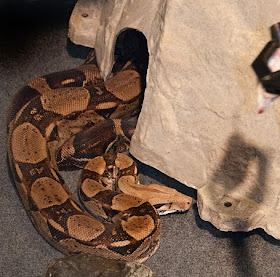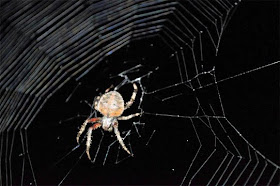
When you come to
Pacific Science Center’s Tropical Butterfly House, you’ll find yourself transported to beautiful and surreal world where butterflies fly freely all around you. Our butterflies are so beautiful and so fearless around people, but as tempting as it is to want to reach out and touch them, we ask our guests:
Please don’t touch, chase, or try to attract butterflies. Even our trained Life Sciences staff tries to handle them as little as possible – only when releasing them into the exhibit or removing them from immediate danger. There are many compelling reasons why this is our policy.

In a year, we release about 25,000 butterflies into the Tropical Butterfly House. At any one time, between 500 and 800 of them might be flying around you. It may feel like there are plenty to go around. In fact, we humans outnumber the butterflies in the exhibit. In the same year, we will have over 500,000 people visit the exhibit! That means for every butterfly, there are at least 20 people.
Sure - one person touching one butterfly may do very little harm. A few scales will be rubbed off the wings, or a bit of the oils from our skin might clog the pores of the butterfly’s limbs. But the accumulated damage from 20 people - even the most careful and well meaning - can be significant to these small and fragile creatures.
And you may be very careful and coordinated, but the toddler watching, and modeling on your behavior, may not be.

What does all of this touching mean for a butterfly? Butterflies cannot repair damage to their bodies. If a scale is lost, a new one does not grow in. If the rigid veins in their wings are broken, they will not mend and the butterfly’s ability to fly will be reduced or lost entirely.
Chasing butterflies can also be harmful to them, even if you never catch them. It can lead to their energy stores becoming exhausted with no way to recover those reserves.

Ok – so you are convinced that touching butterflies is harmful. But it is still so tempting! What can you do? Some tips in (no particular order) may help you enjoy your visit without succumbing to the temptation of touching:

• Use the picture guide to learn more about the butterflies - not for lifting the butterflies up! Identify a few species, find out about mimicry or learn how butterflies eat. It’s all in the guide.
• Really observe. Get beyond looking and enjoying. Ask yourself what the butterflies are doing. It doesn’t matter if your answers are the same as someone else’s. For some, getting in the habit of observing can lead to scientific discovery. For others it opens new creative channels. Find out for yourself what there is to see.
• Take pictures. It is another way to get close, and your hands will be too occupied to touch the butterflies.
• Go in with your sweetie and hold hands. This isn’t always an option, but the butterfly house is a great place to be on a cold day with someone you love. More than one marriage proposal has taken place there. Just saying…
Special thanks to hand model Gail Stern Lovelady.























